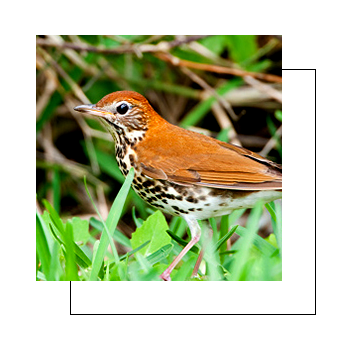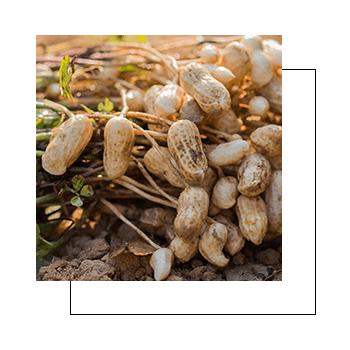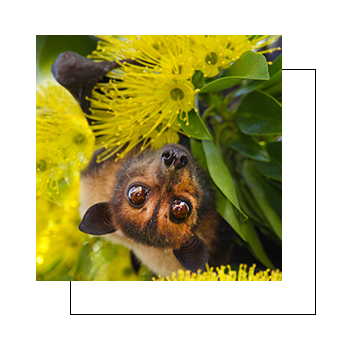
How Farmers are Supporting the Environment
How can the industry equip farmers with the tools they need to grow our food, while also preserving enough land and habitat for all species to thrive? Find out.

For the unfortunate allergy sufferer, pollen is an unwelcome nuisance. But these tiny grains of genetic material can be found in many different forms, upholding an important ecological purpose. Over millions of years, vegetation has used used different pollination processes and pollinators as a means of survival. From the familiar potted plant, to row crops, to rare tropical fauna, every seed-producing variety looks to pollination to sustain its existence.
The process of pollination is one part persuasion and one part luck. As animals, insects, and other carriers of pollen forage through their habitat, they come in contact with this substance. These grains of pollen attach to the creature who, when conditions allow, unknowingly transports pollen from one flower to another. “Effective” pollinators generally visit many different flowers (within the same species) improving the odds of the plant producing offspring.“Ineffective” pollinators on the other hand can free the pollen, but fail to deliver to the correct flower.
All of this leads to producing seeds—a plant's primary objective. Over centuries, humanity has enjoyed the literal fruits of this process. Our food is the product of many different pollination processes.
In basic form, pollination is an exchange between a plant's male and female reproductive organs, the anther and stigma respectively. This process of fertilization is aided by manual labor, natural phenomena, and more than 3,000 species of pollinators.


Honey bees are rightfully the world's most famous pollinators—the primary contributors to pollinating the food supply. But small mammals, other insects, and even reptiles help transport pollen. In the United States alone, more than $3 billion in value is delivered by wild pollination every year. Insects like beetles, butterflies, and even songbirds provide this valuable ecological service.


Invisible gusts of air can carry pollen great distances—no insect or animal required. Some of the most widely grown commercial crops are pollinated by wind. Wheat, rice, corn, oats, and others plants forgo expending energy on attracting pollinators and simply release and capture pollen as it moves through the air.


For the more independent varieties, fertilization can occur without outside influence. A quality found in peanuts, self-pollination has many advantages. Provided these crops are grown in a suitable environment, they generally consume less energy, provide a consistent harvest, and avoid dependence on pollinators.


For the small greenhouse, manual pollination with a paint brush or a cotton swab is effective. Tomatoes, squash, and other cucurbits are often the best candidates and benefit from meticulous cross pollination. Such a thoughtful form of human intervention can help grow new, more resilient varieties of produce.


Fruit bats are an unlikely partner in plant fertilization but guava, mangoes, and bananas benefit from their nightly pursuit of food. Bats’ wings provide a useful vector for the pollen, depositing grains as they travel.


Given primates live in tropical environments and consume large amounts of fruit, some researchers theorize that apes might have a significant impact on pollination. Although this research remains in the early stages and likely inconsequential to the food supply, primate-flower pollination may uncover an entirely new dimension of this species.
Like all life forms, plants have an instinct to pass on their genes. To fulfill this drive and avoid the perils of inbreeding, most plants pollinate with a diverse array of flowers. Although uniformity is desired in some cases, crops without genetic diversity can become more vulnerable to disease, pests, and environmental pressures. To overcome this challenge, modern agriculture is focused on genetics—using software to sequence plant DNA and uncover more about the inner workings of the plant world.
Over millennia, plants have continuously evolved to ensure the legacy of this partnership with pollinators. Flowers use their brightly colored petals to stand out to flying insects (namely bees). Vegetation is also known to use an alluring, sweet aroma to captivate desired pollinators. This use of smell can be tailored to attract only the most discerning pollinator. For example, the rafflesia flower, native to Indonesia, emits a foul “rotting meat” odor that drives away many, but attracts certain flies well equipped for pollination.
Over millennia, plants have continuously evolved to ensure the legacy of this partnership with pollinators. Flowers use their brightly colored petals to stand out to flying insects (namely bees). Vegetation is also known to use an alluring, sweet aroma to captivate desired pollinators. This use of smell can be tailored to attract only the most discerning pollinator. For example, the rafflesia flower, native to Indonesia, emits a foul “rotting meat” odor that drives away many, but attracts certain flies well equipped for pollination.
The pollination process is a testament to the importance of biodiversity, a clear demonstration that every organism, insect, and animal plays a role in the ecosystem. The digital tools and technology used on farms today are designed to make the most efficient use of natural resources—helping minimize the impact of modern agriculture on local habitat. When it comes to caring for the Earth, maintaining balance is essential.
Related Articles

How can the industry equip farmers with the tools they need to grow our food, while also preserving enough land and habitat for all species to thrive? Find out.

